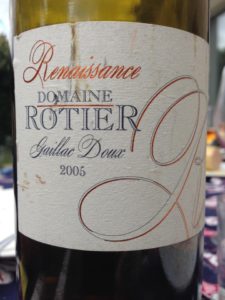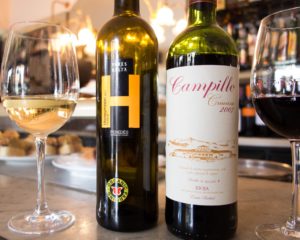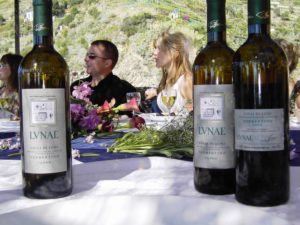Steph: Welcome back Wine Two Five listeners for Part 2 of our Spain series! This is Episode 64, and Val and I are at-the-ready with some special Spanish wines.
Val: Hell yeah, it is gettin’ hot in here…nothing like drinking rose’ in a sports bra at 1030 in the morning. Let’s get into this very merry #ThirstyThursday… but before we talk about what’s in our wine glasses, let’s pick the winner of our quarterly #W25Challenge!”
The winner of the #W25Challenge for the second quarter of 2016 is Lynn Gowdy for her 11 April FB post on Gaillac! Lynn will be able to co-host a future episode with us and help choose the topic, so stay tuned for another show where the listeners get to drive!
Drinking: what’s in our glasses
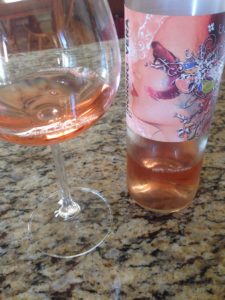 Val: 2015 Honoro Vera Rosado from Jumilla, Spain. This is another wine from the Juan Gil family (as was the Bodega Ateca I had last week from Calatayud). It is a blend of Tempranillo and Syrah at about 12.5% alcohol. This is another $10 beauty that is going down way too easy, chilled, and loaded with red berry fruits. I had it with some harissa-rubbed Fontina cheese & it was the bomb.
Val: 2015 Honoro Vera Rosado from Jumilla, Spain. This is another wine from the Juan Gil family (as was the Bodega Ateca I had last week from Calatayud). It is a blend of Tempranillo and Syrah at about 12.5% alcohol. This is another $10 beauty that is going down way too easy, chilled, and loaded with red berry fruits. I had it with some harissa-rubbed Fontina cheese & it was the bomb.
Steph: 2014 Avinyo Petillant – a “prickly” wine from the Penedes region of Spain (aka Cava country), just outside of Barcelona. When I say “prickly”, I mean it is slightly frizzy. The bubbles come from the Charmat method from secondary fermentation in tank. The grapes used are Muscat and Macabeo. It is light in alcohol at only 10.5%, which makes the ideal breakfast wine – since it was 10:30am when we started this Skype call. Fun, slightly geeky wine for the hot summer weather and priced around $15.
Discussion: More about Spain
Spain has a long history of grapegrowing that dates back to somewhere between 4000 & 3000 BC. Yet, winemaking was actually more of a business under Roman rule in the 2nd century BC, as with many other wine regions of Europe. It’s interesting that the Moorish occupation in around the 7th century did not stifle grape growing or viticulture (remember, this was Islamic rule) and they actually drank wine as well (it’s just that selling it was illegal).
We can, however, thank the English for the healthy growth of Spain’s export industry by the 13th century, and contributing to the Sherry industry since the 16th century as well, as Sherry, or “Sack” was commonly drunk by members of the English Court.
Also in the 16th century the Spanish conquistadors began setting the stage for grape growing in vine management in Mexico (where Vitis Vinifera vines were first planted) and South America, Peru, in particular, with vines from the Canary Islands. You may remember then the stories from previous episodes where wine making had started in Peru and branched out to the Chilean and Argentinean regions (again, thanks to the church).
So there really is much more to this history but we wanted to reach way back for some goodies that you may find interesting.
Vocabulary:
Tinto = red
Blanco = white
Rosado = rose
Espumosos = sparkling
Dulce = sweet
Vinos de Pagos = single estate, pago means vineyard
Cosecha = vintage or harvest
Age quality/wine styles consistent throughout most of Spain (exceptions Rioja Ribero del Duero)
- Joven – Young wine where fruit is the primary focus; these are found on the market the spring following the harvest.
- Crianza has some aging, depending on the appellation, and can spend anywhere from 6 to 12 months in wood plus additional time in bottle before release
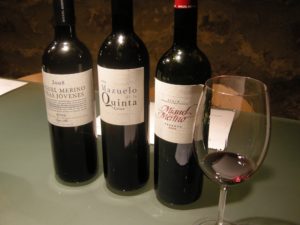
- Reserva wines will have longer minimum aging requirements, often 3 years aging for reds, min 1 year in oak)
- Gran Reserva are your long aged wines, and there was time where Spain had some of the longest aged wines in the world – often five or more years aging for reds, min 18-24 months in oak, again, depending on appellation.
An interesting point here is that since American oak is often used, particularly in Rioja, that the older the wine, the more of that characteristic dill and coconut aroma will come through when you’re smelling the wine!
Factoid:
Tempranillo has over 40 different names. That can be very confusing. We won’t go over all of them, but here are a couple you might see:
- Tinto de Toro
- Cencibel
- Tinto del Pais
- Ull de Llebre in Catalunya, because Catalan is it’s own dialect.
Those are the most common, unless you head to Portugal. In Port wines or from the Dao you’ll see it as Tinto Roriz and in the region of Alentejo as Aragonez.
Winoradar
Val: “A new Cava Category, since we’re chatting about Spain: Single Estate Cava. This is a move to create a higher quality category of the bubbly. And no, it does not come in blue. Here is some more information about what is designed to be a premium level of Cava: http://winewitandwisdomswe.com/2016/06/15/announcing-cava-de-paraje-calificado/”
Shoutouts:
Steph: “I am so grateful for my buddies at Supermarket Liquors. Yesterday they gave me their undivided attention showing me new wines, explaining their characteristics and making sure I left with exactly what I needed. Adam, Zack, and Wayne, you dudes rule! Zack helped me with the wine I’m drinking now – so muchas gracias!
“Also, because Supermarket Liquors has such a great selection, yesterday I found my wedding wine, LVNAE Colli di Luni Vermentino. It wasn’t imported to the US the last time I looked. You don’t see many wines from Liguria and the Cinque Terre area. I can’t wait to show my Justin – but I’ll have to wait because he’s on a rafting trip in Idaho right now.”
Val: “Annnnd that’s all we have for this week. Connect with Val on Twitter @WineGalUnboxed and on the Vino With Val FB page, and on instagram as Vino with Val. You can find Steph on Twitter @Albarellosoap and on the AlbarelloSoap FB page, and check out the videos on the Albarello YouTube channel!
Steph: “You can visit us on the WineTwoFive website, FB page, Twitter, Pinterest & YouTube, or email us via our contact page. Also, if you want to build your collection of wine books – particularly the ones we’ve mentioned on this show, you can check out our favorites in the W25 store on our website. We hope that you’ll share Wine Two Five with your friends and online community. We certainly also appreciate all your interaction and feedback as well as iTunes reviews.
“One more thing, don’t forget to use the #W25Challenge when you are trying new wines and drinks & thank you to those who have been posting and trying new things. So until next week – Cheers!”
